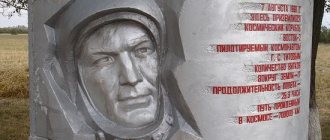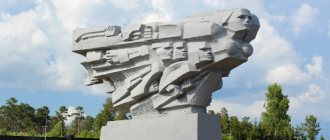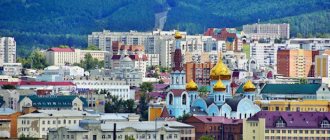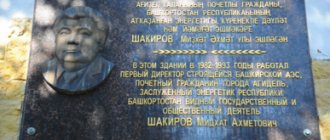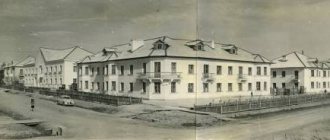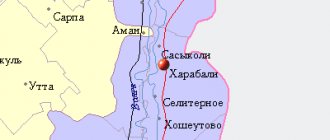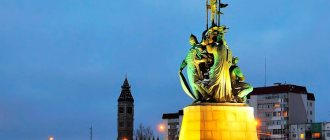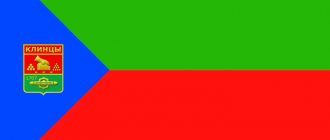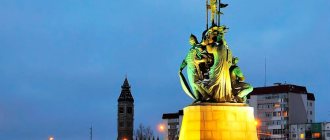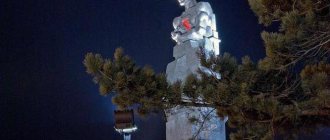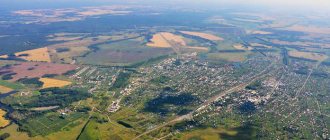Historical and cultural
Just 2 km from the central part of the city there is an amazing place. Travelers will see 14 reconstructed buildings. The appearance of Surgut in the 19th and 20th centuries has been recreated on the territory of the center.
Wooden houses were previously located in different parts of the city. Later they were collected on one territory and formed a single architectural ensemble.
In 2001, the open-air museum complex was replenished with another masterpiece. The new temple “In the name of all the Saints who have shone in the land of Siberia” was built in the best traditions of the Siberian school of wooden architecture.
Address: st. Energetikov, 2.
What to see in Surgut in winter?
Many people say that it is best to visit Surgut in winter. An incredibly beautiful ice town is being built in “Old Surgut”. Also, bring skis for your winter holiday in this Siberian city. Just 20 km from the city is Barsova Gora - this is the best ski place for beginner skiers. And real professional skiers, snowboarders and just extreme sports lovers should visit the Kamenny Mys ski complex .
Surgut is a city that never tires of developing and delighting citizens and tourists with new attractions and interesting places. Discuss in the comments the success of the presented 1-day route and share your impressions of the city.
Merchant estate
An architectural monument of the 19th century. The house was built by the local merchant Galaktion Klepikov. After the revolution, the building was nationalized and transferred to the education department.
Since 1974, the city's local history museum has been located in the former merchant's estate. Many exhibits tell about the construction of Surgut.
Recently, the museum opened an exhibition of 300 exhibits dedicated to the years of life of the merchant Klepikov. Samovars, household utensils, paintings, antique furniture, and jewelry will tell you about merchant life.
Address: st. Enlightenment, 7.
Residents of Surgut proudly talk about the Yugorsky Bridge, which connected the banks of the Ob. This cable-stayed bridge is one of the longest in the vastness of Siberia. The pylon supporting the suspended part has a height of 150m. The length of the bridge is about 2 km.
In gratitude for the hard work of the builders, who laid the bridge in harsh conditions, immediately after the opening, a museum was organized next to the bridge. The exhibition includes thousands of photographs and documents telling about the construction of the Yugorsky Bridge and other overpasses in the Khanty-Mansiysk Okrug.
Address: road repair point on the left bank of the Ob River.
An introduction to Surgut would be incomplete if you miss the city’s beautiful churches. Most of the churches and cathedrals were built recently.
Church of the Transfiguration of the Lord
One of the most beautiful temples in the region is located near the river. The majestic temple in the shape of a cross was built according to the design of Moscow architects.
Residents of Surgut collected funds for the temple. Construction lasted 10 years. At the end of 2002, the first service was held in the temple. The largest bell, installed on the bell tower of the Church of the Transfiguration of the Lord, weighs about 6 tons.
Address: st. Melik-Karamova, 76.
Temple of All Saints
Craftsmen from the city of Suzdal built a majestic temple in Surgut in 2002. The building was erected on the site of the first Orthodox church. The local Orthodox community was organized by Russian Cossacks led by V.K. Emelin.
The beautiful temple in Surgut resembles the Yakut Transfiguration Church. During construction, all canons and norms of Russian Orthodox architecture were observed.
Address: st. Power engineers.
Original sculptures are installed on the streets of Surgut. Some structures cannot be found anywhere else in Russia.
Religious sites
Not far from Victory Park, at Komarova 5, is located one of the symbols of the Republic of Bashkortostan - the Lyalya-Tulpan mosque. The building resembles a blossoming flower, and the minarets are its buds. This flower was not chosen by chance, since it is the tulip that symbolizes Allah for Muslims. The mosque opened its doors on April 7, 1998.
The building consists of 3 floors, its height is more than 20 m, and the height of the minarets is 53 m. The area of the mosque is 2500 sq.m. “Lala-Tulpan” is not only a mosque, but also a madrasah, Sunday schools, classrooms, a dormitory and a conference hall.
It is an object of historical and cultural heritage. The consecration and opening of the temple took place on September 6, 1909. Its height is 21 m, including the bell tower - 47 m. The modern appearance is the result of several reconstructions. The building is sky blue and is crowned with golden domes.
The interior decoration of the temple is truly amazing - the walls and floor are decorated with the best Italian and Greek stones. Italian emerald-colored minerals were used for the mosaic, as well as granite from South Africa. The walls and ceiling are covered with paintings. The cathedral contains parts of the relics of many saints. Address: Kirova, 102.
The Ar-Rakhim mosque is being built in Ufa, which will become the tallest in Russia. The facility is located at the intersection of Salavat Yulaev Avenue and Kommunisticheskaya Street. Despite the fact that construction has not yet been completed, the mosque impresses every resident and guest of the city with its appearance and scale. The height of the four Al-Rahim minarets is 74 m.
The design uses classical Islamic motifs in combination with elements of Bashkir ornament. It uses only hand work. The mosque consists of 6 floors, 2 of them underground. Inside there will be prayer halls, a conference hall, a museum, a library and other premises. Capacity – 2000 people. A park and fountains will be equipped in the adjacent area.
There will be 2 observation platforms for tourists. A special feature of the mosque is that it will house a relic - a hair from the beard of the Prophet Muhammad. On Mingazheva 4 there is the Church of the Intercession of the Blessed Virgin Mary, which is the oldest surviving Ufa church. Despite its not the most convenient location, the temple is worth visiting for all believers.
An ancient icon of the Intercession of the Blessed Virgin Mary is kept here. The church is protected by the state as a cultural heritage. Restraint in architecture and design does not prevent it from being a significant place among Orthodox Christians. Another cultural heritage site is the Bogorodsko-Ufa Church.
This is one of the largest churches in the Ufa diocese. It houses a relic - the Bogorodsko-Ufa Icon of the Mother of God. There is a Sunday school at the church for adults and children. At services you can listen to the church choir, created in 2008. Temple address: Ferina 15.
Monument to a Smile
Laughing fish and a mermaid in a hat with earflaps. A funny sculptural composition always evokes good feelings. Author: Oleg Dergachev.
They say that once upon a time there lived a funny fish in one of the lakes. Perhaps this is a true story?
Address: st. 30 years of victory.
Research work “Sights of the city of Surgut. Monuments."
Slide 1
Electronic catalog of monuments of the city of Surgut. From Urgut 2013.
Slide 2
Monument to the “First Builders of the New City” A little-known monument to Surgut residents is located near the new SIA-PRESS office. Presumably it was installed in the mid-seventies and was made using a rare technique - majolica (fired clay). It will be included in the register as the “Monument to the Founders of the New City.” Installed in 1960
Slide 3
Memorial of Glory A granite structure, on the right and left sides of which there are 16 slabs with the names of more than a thousand front-line soldiers who did not return from the battlefields during the Second World War. In 1975, a gas main was connected to the memorial, and the Eternal Flame was lit. In 1995, a stone chapel was built on the site of the Trinity Church. In 2004, reconstruction of the Glory Memorial began (the author of the project is N. Mazurenko). It was installed in September 1968. Monument to the fighters for Soviet power, the Surgut soldiers who died during the Great Patriotic War.
Slide 4
Monument to the first Komsomol members The names of the first 16 Komsomol members of Surgut are carved on the monument, as well as words of dedication from the youth of the 60s (author - N. Ezdakov): “They accomplished the Promethean feat, tearing us out of ignorance and darkness.” The monument plays a big role in patriotic education. Was installed on the street. Melik - Karamova (Geologists Square) in October 1969. The authors of the project are students of the Lviv Polytechnic Institute Oleinik I., Sergeev Yu
Slide 5
Monument to the first exploration R-1 One of the oldest and most forgotten monuments is the monument to the first exploration "R-1". It is located on Tereshkova Street. It was installed in July 1970.
Slide 6
Mosaic panel “Madonna and Child” The mosaic depicting a woman with a child on the wall of the air terminal appeared 4 years after the construction of the building. The authors Grigory Polishchuk and Svetlana Shcherbina first wanted to decorate the facade of the building with a wind rose, an airplane or a helicopter. But they settled on a woman with a child in the porthole, known to all Surgut residents. It was installed in September 1970.
Slide 7
Monument to the “Courage of the Fishermen of Surgut” During the war years, 280,000 quintals of fish were handed over to the Motherland; Over the 70-year history of the fish processing plant, 213,000 tons of raw materials were produced. On the territory of the fish processing plant, built in 1972, there is a monument to the courage of fishermen during the Great Patriotic War. Sculptor Gorda V.
Slide 8
Monument to the “Courage of the Fishermen of Surgut” Currently, part of the monument dedicated to the courage of the fishermen during the Second World War adorns one of the garden plots
Slide 9
Stela “Torch” Stela “Torch” or “Broken Pipe”. Located in front of the Gazprom building, the composition belongs to the category of park sculptures, made in the spirit of the avant-garde by the famous sculptor of the times of socialism, Honored Artist of Russia Yu. Vavakin. It was installed in 1982 - 1984.
Slide 10
Monument to the Bulgarian leader Georgi Dmitrov. This is Georgiy Dmitrov, the leader of the Communist Party of Bulgaria, an outstanding revolutionary, an uncompromising fighter against fascism, General Secretary of the Central Committee of the BCP and simply a mighty friend of the Soviet Union, who after his death was called the leader of the Bulgarian people and was placed in a mausoleum in Sofia. The bust was erected in Surgut in 1987 with the participation of Bulgarian builders to commemorate joint work. And, by the way, the tiny park in which the monument stands is called the Russian-Bulgarian Friendship Square. And no one knows about this either. Located in the Friendship of Peoples park.
Slide 11
Sculptural composition “Pegasus” The sculptural composition was made in the workshop of A. Bondar. In Greek mythology, a winged horse born from drops of the blood of the gorgon Medusa killed by Perseus. Located on the street. Energetikov, 49/1 (yard of the Znamensky school). Was installed in 1989.
Slide 12
Sculptural composition “Aurora” Sculptor A. Kovalchuk embodies the goddess of the dawn. Located on the street. Lenin (square in front of the Aurora cinema). It was installed in July 1994.
Slide 13
Small sculptural forms “Zodiac Signs” Sculptural forms were opened in 1994, at the Municipal Cultural Center on the street. Sibirskaya, 2. The sculptural forms are made of iron and represent the signs of the zodiac around the planet “Sun”. Unfortunately, today most of the established small forms have been lost, only 2 remain - “Sun” and “Aquarius”.
Slide 14
Memorial obelisk to the people of Surgut It was opened in 1945, then lost. Architect - Mazurenko N., Olenin V. - artist. It was originally erected at the river station in 1945 in wood, restored on May 8, 1995. The modern monument is a white marble stele (weight 8 tons), made in Yekaterinburg. Restored in 1995. River station embankment
Slide 15
Monument to Internationalist Soldiers Created on the initiative of the public organization of veterans of military operations in Afghanistan “Salang”. There are slabs with the names of Surgut residents who died in combat in “hot spots”. This is the center of the spiritual life of the townspeople: the monument was created with public money and the care of its maintenance rests on a voluntary basis with fellow soldiers and comrades. Was installed on the street. Energetikov (Central Square") in October 1998. Sculptor P. Lyubimov, artist K. Soprichan, architects N. Mazurenko, V. Unzhakov.
Slide 16
Monument to A.S. Pushkin The monument to the poet - Alexander Sergeevich Pushkin - was made in the city of St. Petersburg. Sculptor A. Dema, architects N. Sokolov, S. Mikhailov, installed in 2001. Made of red polished granite and bronze, the total height of the composition is 6 meters. Was installed in 2001.
Slide 17
Monument to the “Book” Works by sculptor Alexander Kapralov. A graduate of the Omsk “hoodgraph” works not only with metal, his works in stone and wood can be seen in many museums. Located on the territory in front of Surgu State University. Was installed in July 2002.
Slide 18
Sculptural composition “To the Discoverers of the City of Surgut” The monument was erected in the very center of Surgut in 2002. Prince Fyodor Boryatinsky, governor Vladimir Anichkov, an unnamed priest and a Cossack carpenter are immortalized in bronze. It was installed in 2002. The composition is symbolic: the personification of the ideas of statehood (prince), military power (voivode); the figure of a clergyman is an image of the idea of Orthodoxy, which came along with the Tsar’s people to the land of Ugra. Square of the 400th anniversary of Surgut.
Slide 19
Monument to the builder Iron Man. The monument is dedicated to those who fought for Surgut in difficult conditions. The sculpture looks very unusual. In a robe, a helmet with three letters SMU stamped on it, with a cigarette in his hand, the builder seems to be appraising the fruits of his labor - a multi-storey building under construction. The figure of the builder is central, and therefore the largest, it symbolizes that the main thing in any profession is people. But local builders expressed dissatisfaction with the statue. The builders believe that their “iron colleague” with a cigarette in his hands distorts the culture of those who built the North. The monument to the builder Iron Man was erected on the pedestrian zone of the Prometheus store, installed in August 2003.
Slide 20
Monument to the first train The railway from Tyumen to Surgut is 700 km long. became one of the most important construction projects during the years of development of the oil and gas expanses of the Tyumen North. Work began in 1966, and in the summer of 1975 the first freight train arrived at the Surgut station - the cars were carrying four thousand tons of cargo. Located on the square near the train station. It was installed in October 2003. “TEZ-1072 Diesel Locomotive” (original). The very first diesel locomotive that arrived in Surgut became a monument. Great importance was attached to the development of transport in areas where new oil fields were being developed. The accelerated development of Samotlor would have been impossible without railways.
Slide 21
Sculptural composition “Monument to the Smile” Looking at a laughing fish with a mermaid in a hat with earflaps, it is simply impossible to remain gloomy. Located on the street. 30 years of Victory, 21/2 (Museum Center). Was installed in June 2004.
Slide 22
Monument to the aviators of Surgut The monument to the aviators of Siberia was erected on the 40th anniversary of the formation of the Surgut United Air Squadron. It was erected on the square in front of the Surgut air terminal. An Mi-6 helicopter is installed on a special pedestal as a monument. Mi-6 helicopters made a huge contribution to the development of Western Siberia. Having been the most powerful and load-lifting helicopter for a long time, this machine has established itself as a reliable, indispensable assistant. In the harsh conditions of the North, Mi-6s performed difficult work, helping geologists and oil, gas and energy workers. Helicopter MI-6 (original). Located on the square in front of the airport terminal. Was installed in August 2004.
Slide 23
Sculptural composition “Flight” Made of stainless steel. The soaring “half bird, half plane” symbolizes the aspiration to a renewed and bright life. Located at the entrance to Surgut from the airport. It was installed in May 2005. The author is a member of the Union of Artists of Russia I. Machkevsky. Architect V. Safarov.
Slide 24
Busts of Heroes of the Soviet Union Busts of Heroes of the Soviet Union I. Korolkov and T. Azhimov. It was installed in August 2005. Ivan Korolkov also received his hero star for crossing the river, only not the Vistula, but the Dnieper in 1943. As part of a machine gun unit, he carried out the task of distracting the Nazis from the main crossing point. A handful of fighters began crossing under cover of darkness, taking the fire upon themselves. Among the few, Ivan Korolkov reached the opposite bank and launched an attack on the Germans. Despite his injury, he was able to kill about a hundred German soldiers. At this time, the remaining units successfully crossed the Dnieper. For exceptional courage shown in battles with the Nazi invaders.
Slide 25
Busts of Heroes of the Soviet Union I. Korolkov and T. Azhimov. It was installed in August 2005. Azhimov went to war from the village of Black Cape in 1942. He was working in a fishing artel when the summons to the front came. Tulebay took part in the battles near Staraya Russa, in the Bryansk forests, and during the liberation of Belarus. But he especially distinguished himself in Poland. He was awarded the title of Hero of the Soviet Union for his courage and heroism during the crossing of the Vistula River, for the exemplary execution of the command’s combat mission to expand the bridgehead on its western bank.
Slide 26
Monument to T. G. Shevchenko Monument to the Ukrainian poet and revolutionary T. Shevchenko, erected at the expense of V. Samborsky. Was installed on the street. Ostrovsky, 16 (near the Kamerton House of Culture) in September 2005. The author is sculptor A. Tsymbal (Omsk).
Slide 27
Monument to Karl Marx The question of legalization was raised 21 years later, and only because funds were required for the reconstruction of the monument. To do this, the Department of Property and Land Relations needed to apply to the court to declare the monument to Karl Marx ownerless. Only after this, gymnasium No. 4 was recognized as the operating organization of the monument. Currently, it is installed on Energetikov Street, in the courtyard of gymnasium No. 4. The sculpture is already 21 years old. The cast-iron Karl Marx was installed in 1984 in honor of the opening of educational school No. 18 (now gymnasium No. 4). However, all these years it was not listed in the register of city monuments. When the technical passport of the OS was being prepared, documents on land allotment were being drawn up, this object was simply not included in them.
Slide 28
Monument to the employees of the Yugra land who gave their lives in the name of the triumph of the law. Territory of the training center of the Internal Affairs Directorate of the Khanty-Mansi Autonomous Okrug (village of Zvezdny). The monument was created according to sketches and at the expense of a group of students of the training center of the Internal Affairs Directorate of the Khanty-Mansi Autonomous Okrug. Was installed in November 2005.
Slide 29
Small sculptural forms “Fairytale Animals” Animals have settled in Energetik Park. All figures can not only be photographed, but also touched. For example, if you rub a pig's snout, the student can get the coveted A. Located on the territory of the Energetik park. Was installed in June 2006.
Slide 30
Figure “Black Fox” The idea of creating the monument belongs to the Tobolsk bone carver sculptor Minsalim Timergazeev. The bronze figure was cast at the International Center for Culture and Art in St. Petersburg, and delivered to Surgut by plane. Located on the street. Energetikov (square in front of the ICC “Old Surgut”). Was installed in June 2006. The figure was installed on the territory of the Historical and Cultural Center in June 2006. He is the coat of arms and patron of the city. According to legend, the fox was red. And not a fox at all, but a reincarnated heavenly horseman, who descended to earth in this guise and turned black after the fire
Slide 31
Monument to the “Nurse” The initiator of the project is the head physician of the Trauma Center S. Tarasenko. The author is sculptor N. Yanchak. 600 kg of bronze were used to cast the statue, its height is 3 meters. Made at the Sverdlovsk foundry. This is the only monument to a civilian nurse erected in Russia. Located on the street. Ostrovsky (near the trauma center). Was installed in June 2007.
Slide 32
Sculptural composition “Aibolit with animals” The sculptural composition consists of animals who came to see the doctor and Aibolit himself, sitting on a bench with a stethoscope pointed at the next place on the bench. Now Surgut children can sit and take a photo with the good doctor during the “appointment” Located on the territory of the Children's Clinic. Was installed in June 2009.
Slide 33
Bust of F.K. Salmanov Bust of the discoverer of Ugra oil Farman Salmanov. It is installed near the house where the geologist lived upon his arrival in Surgut during the first geological exploration expedition. The marble bust was made in St. Petersburg by sculptor Jan Neumann. He tried to convey with the help of the stone the character traits inherent in Salmanov in life. Tereshkova, 49 (Memorial complex “House of F.K. Salmanov”). Was installed in July 2009.
Slide 34
Monument to the T-55 tank It received headlights, antennas, a night vision device and additional 200-liter fuel tanks. The components were removed from other equipment and can safely be called original, with the possible exception of the machine guns. They were made from ordinary metal tubes. The tank even has its own serial number, which not only distinguishes it from other vehicles, but also shows that it belongs to our region. It was installed in May 2011 on the territory of the “Glory Memorial”. The T-55 tank appeared at the Glory Memorial in May 2010 for the 65th anniversary of the victory. True, unlike its predecessor T-34, which visited Surgut in transit, it did not participate in the Great Patriotic War. Fifty-five were brought from the Chelyabinsk region. In March 2011, the tank was sent for repairs. The 40-ton vehicle was loaded onto KAMAZ and sent to the UTT-5 base of Surgutneftegaz OJSC. The specialists of this organization repaired the equipment and put it in order.
Slide 35
Monument to Ermak This is the first monument to the hero in Western Siberia. The monument was created by sculptor Konstantin Kubyshkin, a graduate student at the Russian Academy of Arts. They made the monument in the town of Zhukovsky near Moscow. Located on Naberezhny Avenue, 31, square in front of the Ermak Hotel. It was installed in July 2010. The grand opening of the monument to the conqueror of Siberia, the Russian Cossack ataman Ermak Timofeevich, took place on the territory of the Ermak Hotel.
Slide 36
Stele “Square in Memory of the Chernobyl People” On April 25, 2010, in the park on Chekhov Street, a stele dedicated to the participants in the liquidation of the consequences of the Chernobyl nuclear power plant accident and other radiation and man-made disasters, nuclear and chemical weapons tests was opened and consecrated. It was installed in September 2010.
Slide 37
Monument to fighters for cleanliness “Ivanovich” An unusual monument appeared in Surgut - a sculpture of an elk with a broom, wearing a hat and coat. It was installed near the building of the Committee on Natural Resources and Ecology. This is a gift to the city from fighters for cleanliness. The author of the original monument is one of the local officials. They have not yet come up with a name for the monument - the city authorities are asking residents to do this. By the way, the townspeople reacted quite favorably to the appearance of such a sculpture. There was a whole line lined up for the photo shoot at the concrete moose. Located on Administrative Ave. Was installed in August 2012.
Slide 38
Thank you for your attention!
Monument to the black fox
The bronze figurine was installed on the eve of the city day. The author is Tobolsk bone carver sculptor Minsalim Temirgazeev.
According to legend, in ancient times, a noble horseman in the form of a fox descended from heaven to protect the Surgut lands. The graceful beast is located near the city center.
Address: st. Power engineers.
Architectural landmarks
Ufa, whose sights can amaze every tourist, has a unique architectural appearance. One of the architectural attractions is the Congress Hall. The building was built in 2007 for the 450th anniversary of the Republic of Bashkortostan. It is truly unique - its architecture combines a modern glazed facade and Bashkir ornament.
The Congress Hall hosts the most significant events of a republican scale. The building is located at the address: Zaki Validi Street, building 2. The Ufa Arena Ice Palace is a multifunctional complex that hosts not only hockey matches, but also ice performances, performances, shows, as well as public skating.
It is the home arena for the Salavat Yulaev hockey team. The grand opening took place on August 27, 2007. The complex includes 2 sites: large (for 8070 people) and small (for 640 people). The arena has special areas for wheelchair users to attend events. Ufa-Arena is located at the address: Lenin Street, building 114.
Not far from the Congress Hall is the main building of the republican government - the House of the Republic. The Government, the Administration of the Head of Bashkortostan, the Constitutional Court and other government bodies are located here. The building has been in operation since 1979. It looks quite impressive. The walls are made of white brick. The House of the Republic has the shape of a rectangle, close to a square.
The building in the inner courtyard is connected to the outer one. Around is Alexander Matrosov's garden, fountains and sculptures. Address of the House of the Republic: Tukaev Street, building 46. Ufa, whose attractions are also associated with sports, has its own hippodrome “Akbuzat”.
Now this is one of the best Russian equestrian sports complexes. In addition to the arena, stables and veterinary post, the 4-level building houses a hotel for competition participants and a museum. Hippodrome address: Mendeleeva, 217A. In the historical center of the city, at Revolyutsionnaya, 41, one of the tallest buildings in Ufa is located - the office of Uralsib Bank.
It includes 21 floors and has a height of 100.5 m. There are practically no high-rise buildings in this area, so the skyscraper adorns the panorama of the city, dominating the landscape.
The facade of the building is made of dark glass, gray and brown building panels. Due to its unusual shape, the building received the popular names “mobile phone” and “candle”. During the New Year's Eve, a figure of Santa Claus is installed on the roof.
Monument to the Nurse
In front of the entrance to the trauma center there is the only monument to a nurse in Russia. The author is Surgut sculptor Nikola Yanchak.
The local doctors liked the figure of a fragile girl rushing to call a sick person. The doctors thanked the author for his attention to their profession and noted that this is how most city residents imagine a caring nurse.
Address: st. Ostrovsky.
Monument to the builder
It is impossible to pass by this original sculptural composition. Many residents of Surgut consider this creation of Alexander Kapralov to be the most original monument of the city.
“Iron Man” is what locals call the handsome builder. Tourists spend a long time looking at the details. Since 2006, the unusual sculpture has become a prominent landmark of Surgut.
Looking at this amazing monument, you can understand how much the townspeople value the work of the builders who built the city in harsh conditions. The sculptural composition was made with love and warmth. City construction companies allocated money to create a smiling guy in a safety helmet.
Address: st. Magistralnaya.
